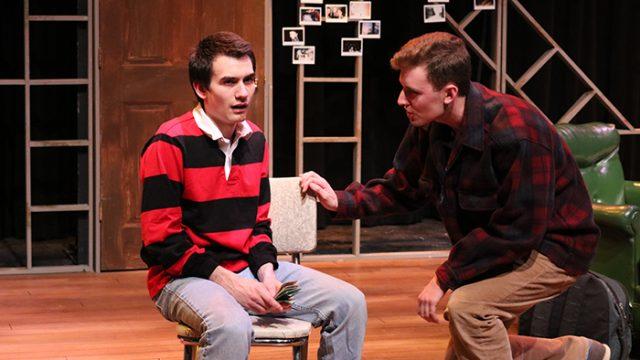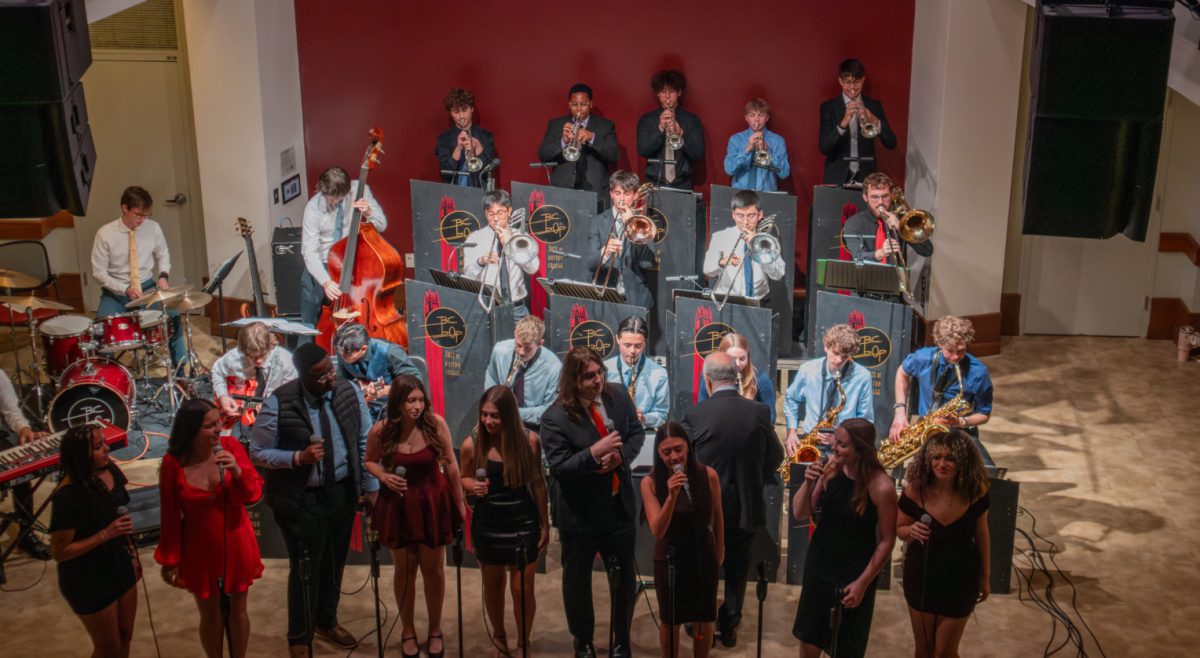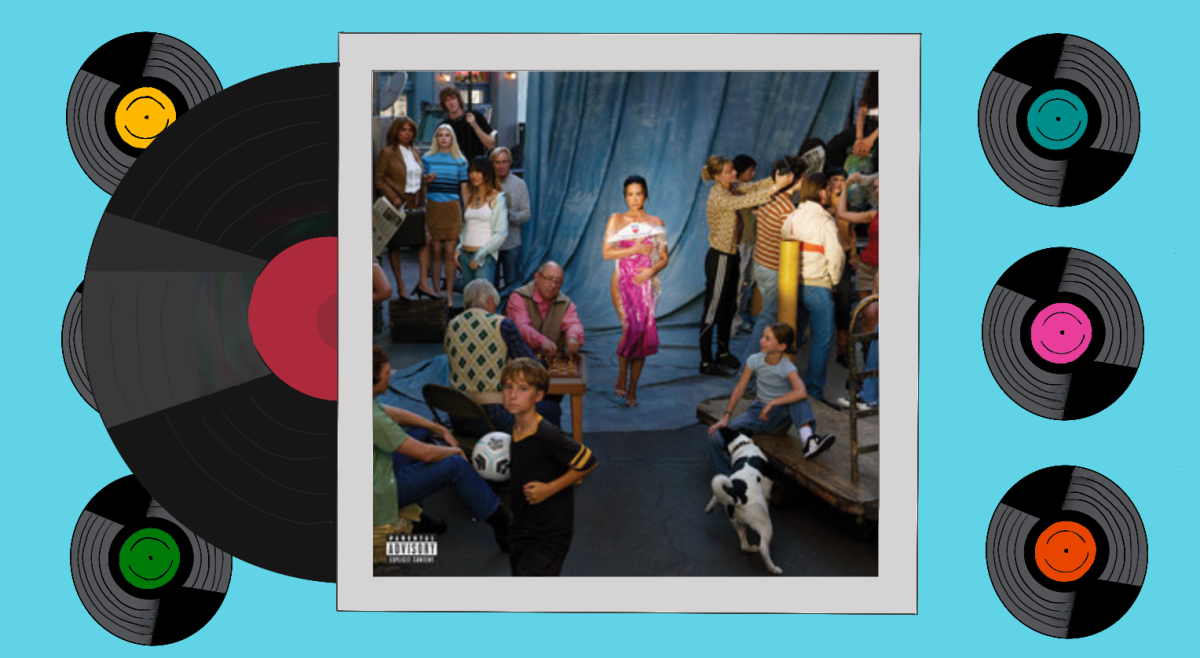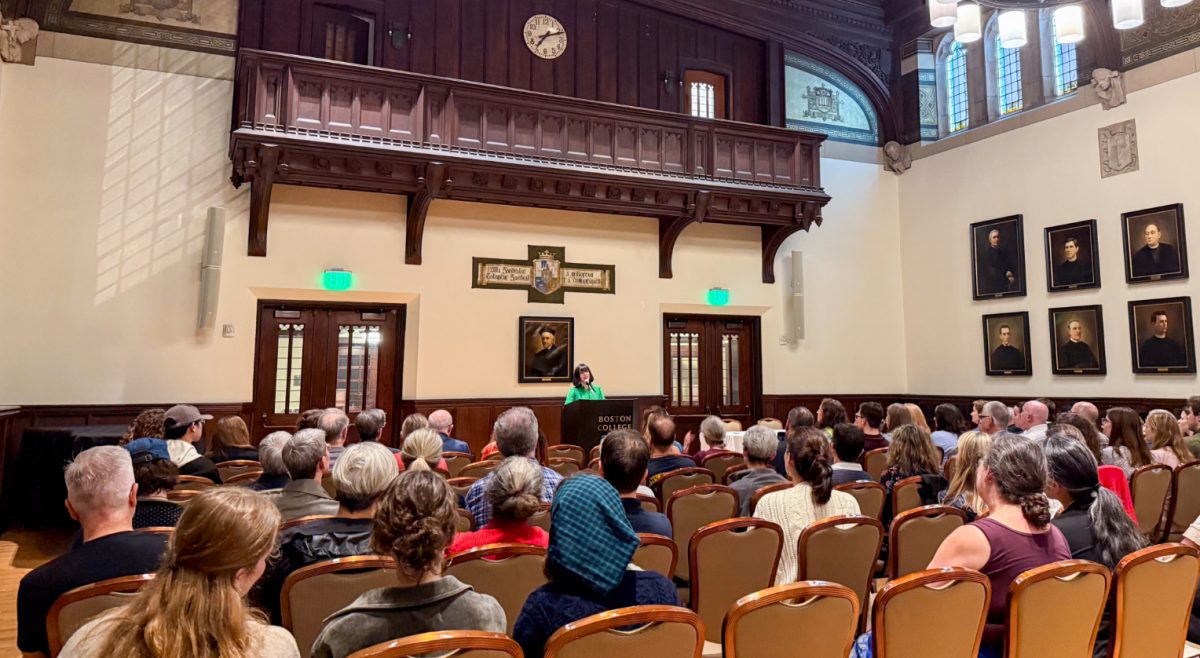Kenneth Lonergan wrote This is Our Youth as a poignant reflection on youth during the Reagan era. But the Boston College Dramatics Society production proved that its relevance escapes its specific setting. Directed by Michael Quinn, MCAS ’19, assisted by Lauren Strauss, MCAS ’18, it is a stellar homage to Lonergan’s seemingly always contemporary play.
Set in the ’80s, the play narrates the story of three young adults in New York City. Kicked out from home by his abusive tycoon father, Warren (Michael Mazzone, MCAS ’19) arrives at Dennis’ (James Stevenson, MCAS ’20) place with a stolen $15,000 and a suitcase full of collectibles. Despite his initial reluctance to host his friend, Dennis suggests buying cocaine to share with his girlfriend, who he’s trying to get back after a fight, and another girl, Jessica (Haley Holmes, MCAS ’19), who Warren likes. Warren’s encounter with Jessica and the boys’ attempt to recover the money leads to a series of conflicts and realizations between the characters. This Is Our Youth is an exploration of delicate themes such as sexuality, maturity, privilege, as well as a poignant reflection about American society.
Stevenson delivers an uncanny performance of a chronically unlikeable Dennis. His interpretation stresses the character’s extreme aggressiveness and emotional violence, and does not fall short of showing his deep complexity. Stevenson’s brilliant performance of Dennis is perhaps the show’s starkest departure from the 2014 Steppenwolf’s production, Quinn’s inspiration, which presented a more tame interpretation.
The decision to present Dennis in this light is arguably a good call. Lonergan’s script does not really aim at poetic justice: in the end of the play, no character is really rewarded or punished for their actions. What it manages to do is to show a journey of stagnation- the characters’ evolutions are just developments of their personalities, results of the conflicts between them—yet nothing in their lives really changes, except perhaps for the accentuation of their confusion, and a hint of a realization on Warren’s side. For this reason, Quinn’s call to ask for no sympathy for Dennis suits the play’s original spirit.
[aesop_gallery id=”132695″ revealfx=”off”]
Despite its aggressive portrayal, Stevenson’s performance is far from simplistic. It leads the audience to admit that, in the end, they understand Dennis’ deeply troubled ways. Stevenson does not present a caricature of a violent and abusive person but a complicated and troubled character, best developed in the flawlessly performed monologues, which shed light on Dennis’ darkest side.
Holmes plays an authentic Jessica, who starts as an uncomfortable and slightly automated character but soon feels at ease in the play. Holmes’ matter-of-fact approach to her character is fresh and extremely credible. She manages to embody Jessica’s oscillating shyness and boldness, and stays true to the character that Lonergan intended her to be: a representation of the imposed vulnerability and confusion that young women in America face.
Moreover, Holmes does an excellent job at portraying her character’s insecurities and contradictions regarding her sexuality. The outcome of her encounter with Warren is delivered in an extremely believable manner, and its relatability makes it especially relevant in a the context of a student production. Holmes’ on-stage dynamic with Mazzone is also praiseworthy, giving scenes their right amount of awkwardness and sexual tension. The couple manages to give a solid account of two young people experimenting with their sexualities, and going through the strange consequences of doing so.
Mazzone excels onstage both with Holmes and with Stevenson, always conveying the idea of a character in constant submission. Warren has ran away from home because of his abusive father, and now is staying with Dennis who puts him down constantly. With Jessica, he constantly needs to prove he genuinely cares about her. In a nutshell, Warren is at odds with a society that always seems to find a way to oppress him. The play leads to his arguable collapse, and Mazzone excellently delivers the realization and escalation of his character’s troubles.
He also transmits Warren’s confusion regarding his privilege, a place also explored by Dennis. The two characters, sustained in the limbo between adolescence and adulthood, enjoy a comfortable immaturity afforded by their parents’ wealth. The play follows the realization by the two characters that this does not come at a small cost.
In the director’s note, Quinn says he read Lonergan’s play not as a “stereotype of an age group,” but as “the struggle of feeling these complicated emotions but not being to express them to someone else. The way young life can take on a rhythm of hitting us until we find out what it takes to make the skin break. And how we keep going.” His production stays true to his view. Far from a display of caricatures of the American youth, the Dramatics Society production of This is Our Youth transports to the present the story of three individuals facing a reality they can’t quite understand.
Featured Image By Taylor Perison / Heights Staff













